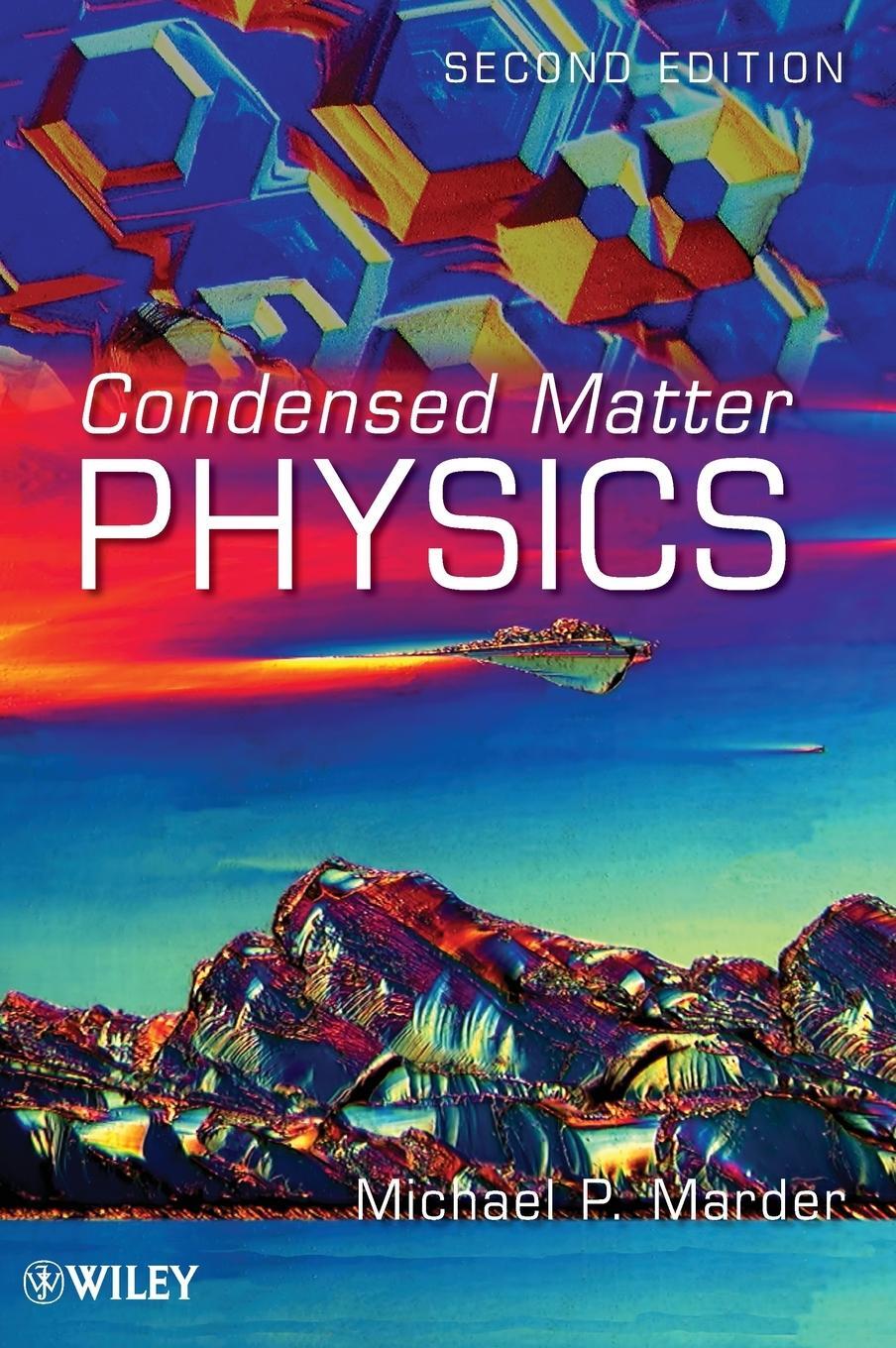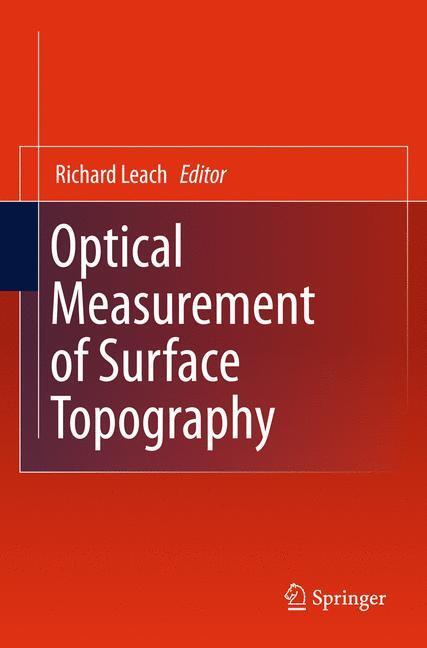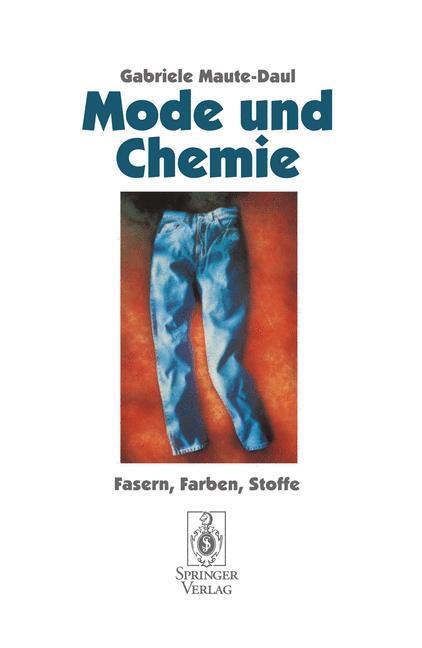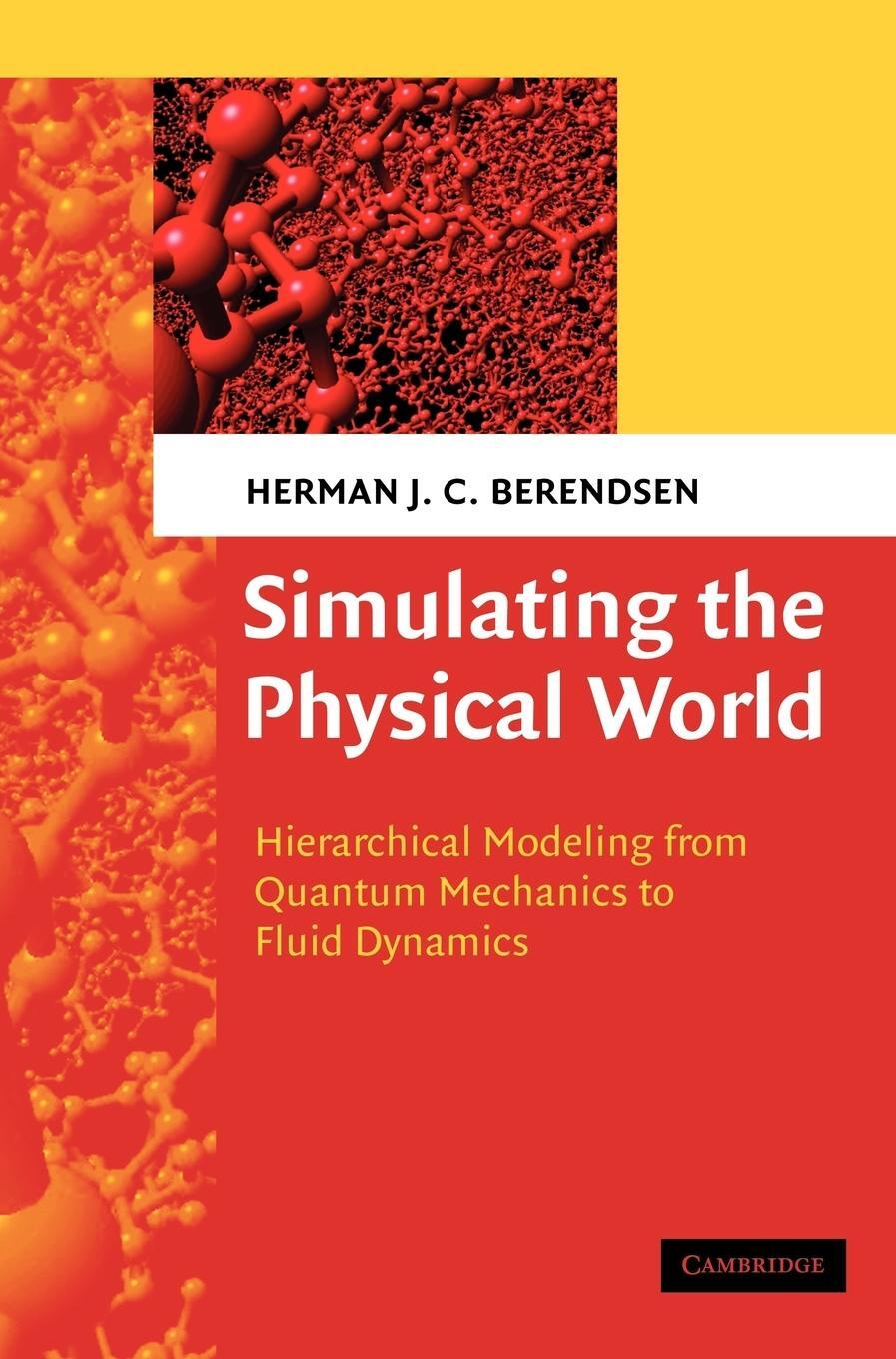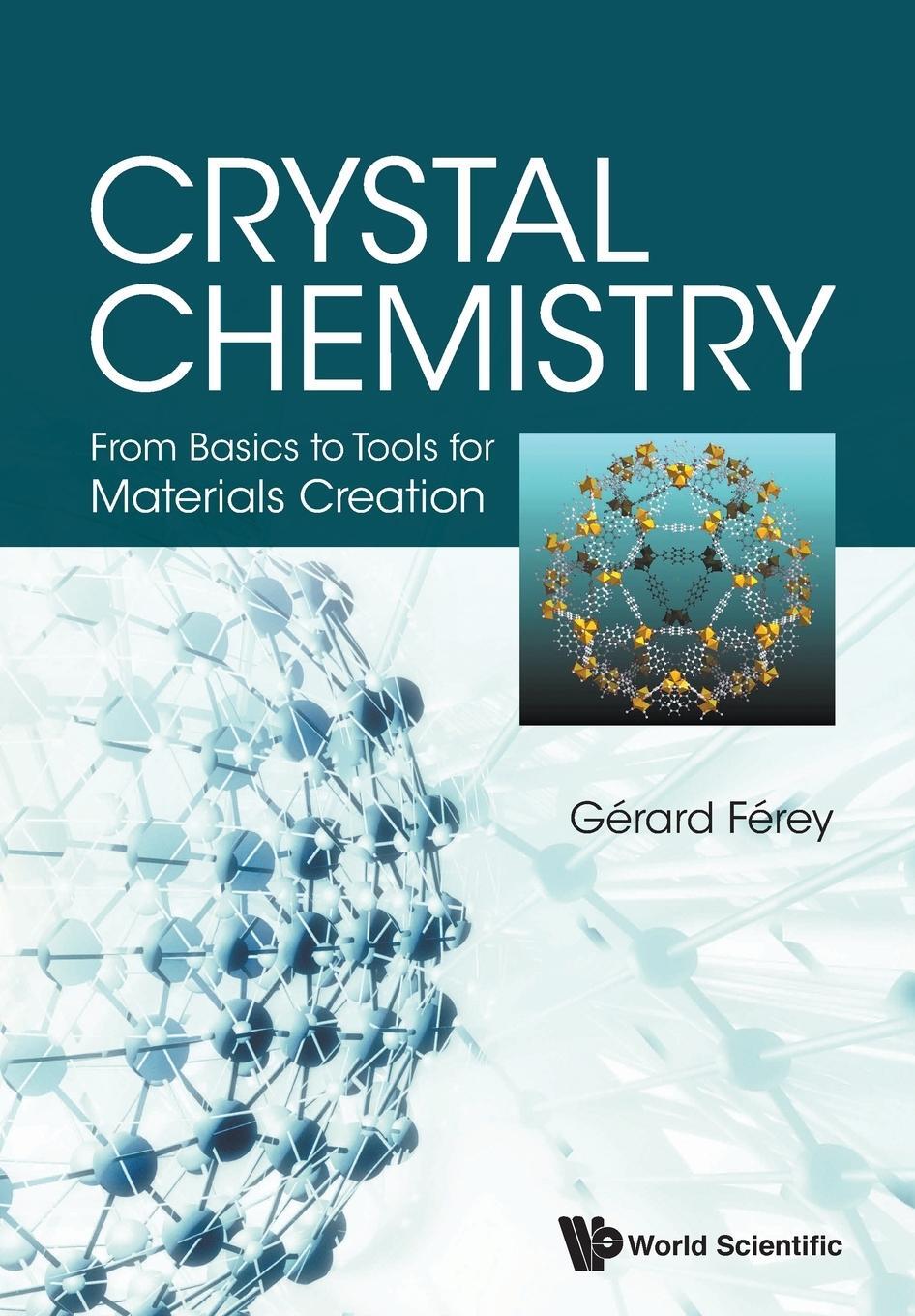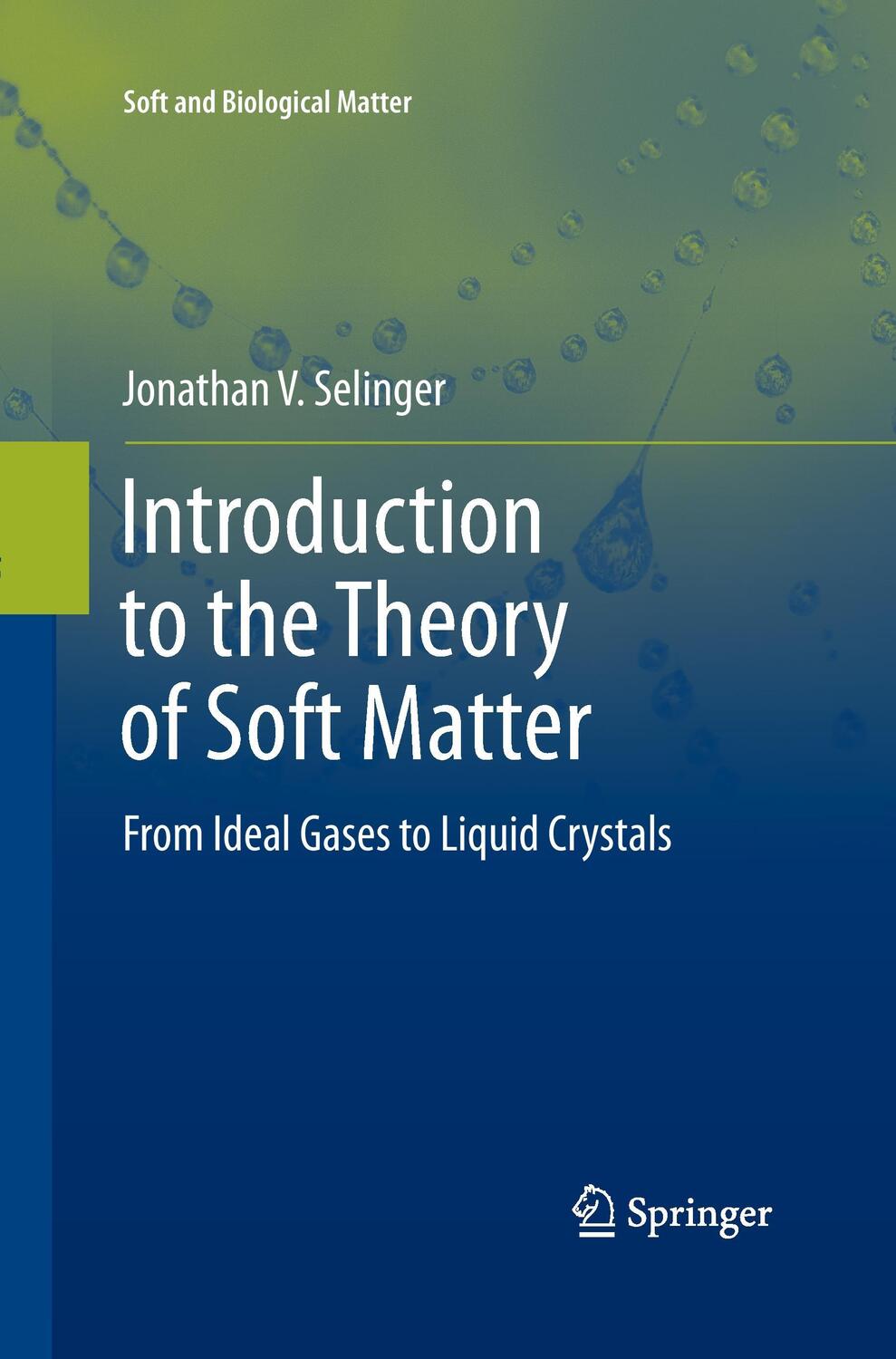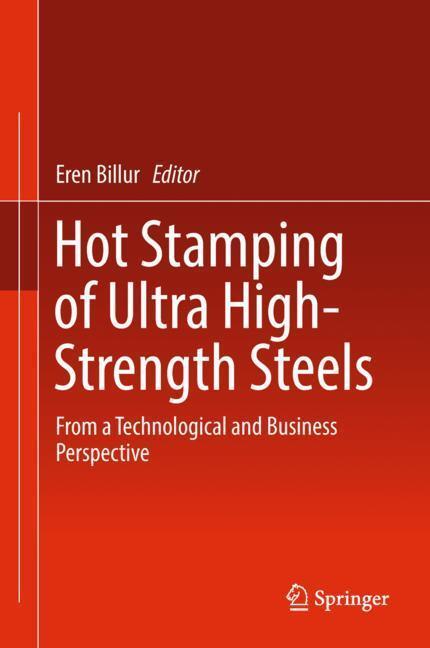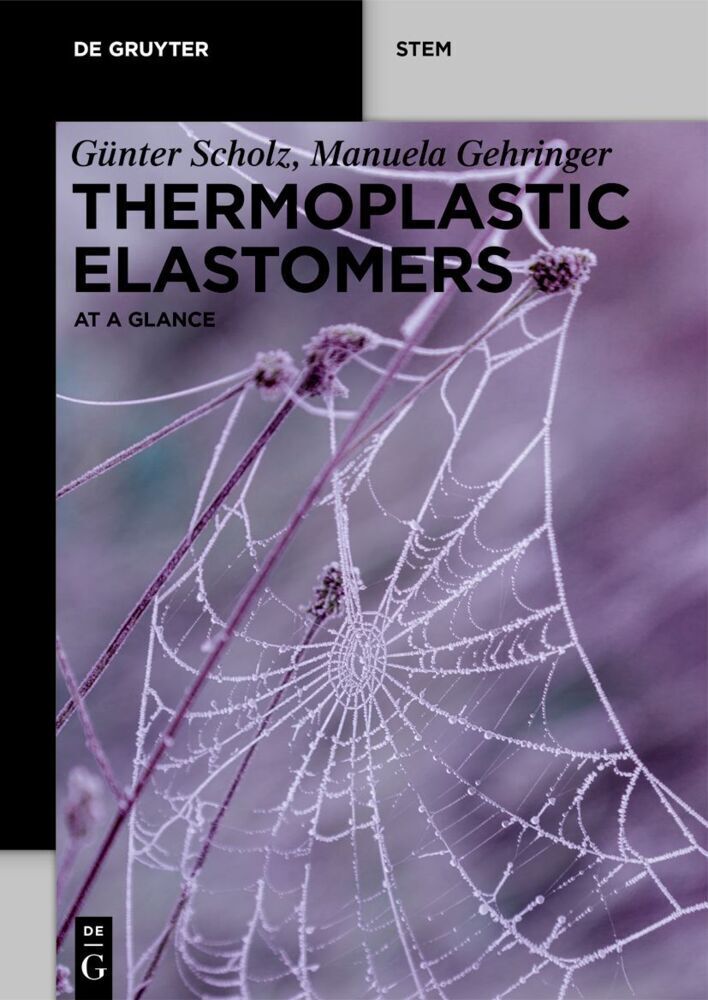Dekorationsartikel gehören nicht zum Leistungsumfang.
Sprache:
Englisch
94,40 €*
Versandkostenfrei per Post / DHL
auf Lager, Lieferzeit 1-2 Werktage
Kategorien:
Beschreibung
This Second Edition presents an updated review of the whole field of condensed matter physics. It consolidates new and classic topics from disparate sources, teaching not only about the effective masses of electrons in semiconductor crystals and band theory, but also about quasicrystals, dynamics of phase separation, why rubber is more floppy than steel, granular materials, quantum dots, Berry phases, the quantum Hall effect, and Luttinger liquids.
This Second Edition presents an updated review of the whole field of condensed matter physics. It consolidates new and classic topics from disparate sources, teaching not only about the effective masses of electrons in semiconductor crystals and band theory, but also about quasicrystals, dynamics of phase separation, why rubber is more floppy than steel, granular materials, quantum dots, Berry phases, the quantum Hall effect, and Luttinger liquids.
Über den Autor
Michael P. Marder, PhD, is the Associate Dean for Science and Mathematics Education and Professor in the Department of Physics at the University of Texas at Austin, where he has been involved in a wide variety of theoretical, numerical, and experimental investigations. He specializes in the mechanics of solids, particularly the fracture of brittle materials. Dr. Marder has carried out experimental studies of crack instabilities in plastics and rubber, and constructed analytical theories for how cracks move in crystals. Recently he has studied the way that membranes ripple due to changes in their geometry, and properties of frictional sliding at small length scales.
Inhaltsverzeichnis
Preface.
References.
I ATOMIC STRUCTURE.
1 The Idea of Crystals.
1.1 Introduction.
1.2 Two-Dimensional Lattices.
1.3 Symmetries.
2 Three-Dimensional Lattices.
2.1 Introduction.
2.2 Monatomic Lattices.
2.3 Compounds.
2.4 Classification of Lattices by Symmetry.
2.5 Symmetries of Lattices with Bases.
2.6 Some Macroscopic Implications of Microscopic Symmetries . . . .
3 Scattering and Structures.
3.1 Introduction.
3.2 Theory of Scattering from Crystals.
3.3 Experimental Methods.
3.4 Further Features of Scattering Experiments.
3.5 Correlation Functions.
4 Surfaces and Interfaces.
4.1 Introduction.
4.2 Geometry of Interfaces.
4.3 Experimental Observation and Creation of Surfaces.
5 Beyond Crystals.
5.1 Introduction.
5.2 Diffusion and Random Variables.
5.3 Alloys.
5.4 Simulations.
5.5 Liquids.
5.6 Glasses.
5.7 Liquid Crystals.
5.8 Polymers.
5.9 Colloids and Diffusing-Wave Scattering.
5.10 Quasicrystals.
5.11 Fullerenes and nanotubes.
II ELECTRONIC STRUCTURE.
6 The Free Fermi Gas and Single Electron Model.
6.1 Introduction.
6.2 Starting Hamiltonian.
6.3 Densities of States.
6.4 Statistical Mechanics of Noninteracting Electrons.
6.5 Sommerfeld Expansion.
7 Non-Interacting Electrons in a Periodic Potential.
7.1 Introduction.
7.2 Translational Symmetry--Bloch's Theorem.
7.3 Rotational Symmetry--Group Representations.
8 Nearly Free and Tightly Bound Electrons.
8.1 Introduction.
8.2 Nearly Free Electrons.
8.3 Brillouin Zones.
8.4 Tightly Bound Electrons.
9 Electron-Electron Interactions.
9.1 Introduction.
9.2 Hartree and Hartree-Fock Equations.
9.3 Density Functional Theory.
9.4 Quantum Monte Carlo.
9.5 Kohn-Sham Equations.
10 Realistic Calculations in Solids.
10.1 Introduction.
10.2 Numerical Methods.
10.3 Definition of Metals, Insulators, and Semiconductors.
10.4 Brief Survey of the Periodic Table.
III MECHANICAL PROPERTIES.
11 Cohesion of Solids.
11.1 Introduction.
11.2 Noble Gases.
11.3 Ionic Crystals.
11.4 Metals.
11.5 Band Structure Energy.
11.6 Hydrogen-Bonded Solids.
11.7 Cohesive Energy from Band Calculations.
11.8 Classical Potentials.
12 Elasticity.
12.1 Introduction.
12.2 Nonlinear Elasticity.
12.3 Linear Elasticity.
12.4 Other Constitutive Laws.
13 Phonons.
13.1 Introduction.
13.2 Vibrations of a Classical Lattice.
13.3 Vibrations of a Quantum-Mechanical Lattice.
13.4 Inelastic Scattering from Phonons.
13.5 The Mössbauer Effect.
14 Dislocations and Cracks.
14.1 Introduction.
14.2 Dislocations.
14.3 Two-Dimensional Dislocations and Hexatic Phases.
14.4 Cracks.
15 Fluid Mechanics.
15.1 Introduction.
15.2 Newtonian Fluids.
15.3 Polymeric Solutions.
15.4 Plasticity.
15.5 Superfluida 4He.
IV ELECTRON TRANSPORT.
16 Dynamics of Bloch Electrons.
16.1 Introduction.
16.2 Semiclassical Electron Dynamics.
16.3 Noninteracting Electrons in an Electric Field.
16.4 Semiclassical Equations from Wave Packets.
16.5 Quantizing Semiclassical Dynamics.
17 Transport Phenomena and Fermi Liquid Theory.
17.1 Introduction.
17.2 Boltzmann Equation.
17.3 Transport Symmetries.
17.4 Thermoelectric Phenomena.
17.5 Fermi Liquid Theory.
18 Microscopic Theories of Conduction.
18.1 Introduction.
18.2 Weak Scattering Theory of Conductivity.
18.3 Metal-Insulator Transitions in Disordered Solids.
18.4 Compensated Impurity Scattering and Green's Functions.
18.5 Localization.
18.6 Luttinger Liquids.
19 Electronics.
19.1 Introduction.
19.2 Metal Interfaces.
19.3 Semiconductors.
19.4 Diodes and Transistors.
19.5 Inversion Layers.
V OPTICAL PROPERTIES.
20 Phenomenological Theory.
20.1 Introduction.
20.2 Maxwell's Equations.
20.3 Kramers-Kronig Relations.
20.4 The Kubo-Greenwood Formula.
21 Optical Properties of Semiconductors.
21.1 Introduction.
21.2 Cyclotron Resonance.
21.3 Semiconductor Band Gaps.
21.4 Excitons.
21.5 Optoelectronics.
22 Optical Properties of Insulators.
22.1 Introduction.
22.2 Polarization.
22.3 Optical Modes in Ionic Crystals.
22.4 Point Defects and Color Centers.
23 Optical Properties of Metals and Inelastic Scattering.
23.1 Introduction.
23.2 Metals at Low Frequencies.
23.3 Plasmons.
23.4 Interband Transitions.
23.5 Brillouin and Raman Scattering.
23.6 Photoemission.
VI MAGNETISM.
24 Classical Theories of Magnetism and Ordering.
24.1 Introduction.
24.2 Three Views of Magnetism.
24.3 Magnetic Dipole Moments.
24.4 Mean Field Theory and the Ising Model.
24.5 Other Order-Disorder Transitions.
24.6 Critical Phenomena.
25 Magnetism of Ions and Electrons.
25.1 Introduction.
25.2 Atomic Magnetism.
25.3 Magnetism of the Free-Electron Gas.
25.4 Tightly Bound Electrons in Magnetic Fields.
25.5 Quantum Hall Effect.
26 Quantum Mechanics of Interacting Magnetic Moments.
26.1 Introduction.
26.2 Origin of Ferromagnetism.
26.3 Heisenberg Model.
26.4 Ferromagnetism in Transition Metals.
26.5 Spintronics.
26.6 Kondo Effect.
26.7 Hubbard Model.
27 Superconductivity.
27.1 Introduction.
27.2 Phenomenology of Superconductivity.
27.3 Microscopic Theory of Superconductivity.
APPENDICES.
A Lattice Sums and Fourier Transforms.
A.1 One-Dimensional Sum.
A.2 Area Under Peaks.
A.3 Three-Dimensional Sum.
A.4 Discrete Case.
A.5 Convolution.
A.6 Using the Fast Fourier Transform.
B Variational Techniques.
B.1 Functionals and Functional Derivatives.
B.2 Time-Independent Schrödinger Equation.
B.3 Time-Dependent Schrödinger Equation.
B.4 Method of Steepest Descent.
C Second Quantization.
C.1 Rules.
C.2 Derivations.
Index.
References.
I ATOMIC STRUCTURE.
1 The Idea of Crystals.
1.1 Introduction.
1.2 Two-Dimensional Lattices.
1.3 Symmetries.
2 Three-Dimensional Lattices.
2.1 Introduction.
2.2 Monatomic Lattices.
2.3 Compounds.
2.4 Classification of Lattices by Symmetry.
2.5 Symmetries of Lattices with Bases.
2.6 Some Macroscopic Implications of Microscopic Symmetries . . . .
3 Scattering and Structures.
3.1 Introduction.
3.2 Theory of Scattering from Crystals.
3.3 Experimental Methods.
3.4 Further Features of Scattering Experiments.
3.5 Correlation Functions.
4 Surfaces and Interfaces.
4.1 Introduction.
4.2 Geometry of Interfaces.
4.3 Experimental Observation and Creation of Surfaces.
5 Beyond Crystals.
5.1 Introduction.
5.2 Diffusion and Random Variables.
5.3 Alloys.
5.4 Simulations.
5.5 Liquids.
5.6 Glasses.
5.7 Liquid Crystals.
5.8 Polymers.
5.9 Colloids and Diffusing-Wave Scattering.
5.10 Quasicrystals.
5.11 Fullerenes and nanotubes.
II ELECTRONIC STRUCTURE.
6 The Free Fermi Gas and Single Electron Model.
6.1 Introduction.
6.2 Starting Hamiltonian.
6.3 Densities of States.
6.4 Statistical Mechanics of Noninteracting Electrons.
6.5 Sommerfeld Expansion.
7 Non-Interacting Electrons in a Periodic Potential.
7.1 Introduction.
7.2 Translational Symmetry--Bloch's Theorem.
7.3 Rotational Symmetry--Group Representations.
8 Nearly Free and Tightly Bound Electrons.
8.1 Introduction.
8.2 Nearly Free Electrons.
8.3 Brillouin Zones.
8.4 Tightly Bound Electrons.
9 Electron-Electron Interactions.
9.1 Introduction.
9.2 Hartree and Hartree-Fock Equations.
9.3 Density Functional Theory.
9.4 Quantum Monte Carlo.
9.5 Kohn-Sham Equations.
10 Realistic Calculations in Solids.
10.1 Introduction.
10.2 Numerical Methods.
10.3 Definition of Metals, Insulators, and Semiconductors.
10.4 Brief Survey of the Periodic Table.
III MECHANICAL PROPERTIES.
11 Cohesion of Solids.
11.1 Introduction.
11.2 Noble Gases.
11.3 Ionic Crystals.
11.4 Metals.
11.5 Band Structure Energy.
11.6 Hydrogen-Bonded Solids.
11.7 Cohesive Energy from Band Calculations.
11.8 Classical Potentials.
12 Elasticity.
12.1 Introduction.
12.2 Nonlinear Elasticity.
12.3 Linear Elasticity.
12.4 Other Constitutive Laws.
13 Phonons.
13.1 Introduction.
13.2 Vibrations of a Classical Lattice.
13.3 Vibrations of a Quantum-Mechanical Lattice.
13.4 Inelastic Scattering from Phonons.
13.5 The Mössbauer Effect.
14 Dislocations and Cracks.
14.1 Introduction.
14.2 Dislocations.
14.3 Two-Dimensional Dislocations and Hexatic Phases.
14.4 Cracks.
15 Fluid Mechanics.
15.1 Introduction.
15.2 Newtonian Fluids.
15.3 Polymeric Solutions.
15.4 Plasticity.
15.5 Superfluida 4He.
IV ELECTRON TRANSPORT.
16 Dynamics of Bloch Electrons.
16.1 Introduction.
16.2 Semiclassical Electron Dynamics.
16.3 Noninteracting Electrons in an Electric Field.
16.4 Semiclassical Equations from Wave Packets.
16.5 Quantizing Semiclassical Dynamics.
17 Transport Phenomena and Fermi Liquid Theory.
17.1 Introduction.
17.2 Boltzmann Equation.
17.3 Transport Symmetries.
17.4 Thermoelectric Phenomena.
17.5 Fermi Liquid Theory.
18 Microscopic Theories of Conduction.
18.1 Introduction.
18.2 Weak Scattering Theory of Conductivity.
18.3 Metal-Insulator Transitions in Disordered Solids.
18.4 Compensated Impurity Scattering and Green's Functions.
18.5 Localization.
18.6 Luttinger Liquids.
19 Electronics.
19.1 Introduction.
19.2 Metal Interfaces.
19.3 Semiconductors.
19.4 Diodes and Transistors.
19.5 Inversion Layers.
V OPTICAL PROPERTIES.
20 Phenomenological Theory.
20.1 Introduction.
20.2 Maxwell's Equations.
20.3 Kramers-Kronig Relations.
20.4 The Kubo-Greenwood Formula.
21 Optical Properties of Semiconductors.
21.1 Introduction.
21.2 Cyclotron Resonance.
21.3 Semiconductor Band Gaps.
21.4 Excitons.
21.5 Optoelectronics.
22 Optical Properties of Insulators.
22.1 Introduction.
22.2 Polarization.
22.3 Optical Modes in Ionic Crystals.
22.4 Point Defects and Color Centers.
23 Optical Properties of Metals and Inelastic Scattering.
23.1 Introduction.
23.2 Metals at Low Frequencies.
23.3 Plasmons.
23.4 Interband Transitions.
23.5 Brillouin and Raman Scattering.
23.6 Photoemission.
VI MAGNETISM.
24 Classical Theories of Magnetism and Ordering.
24.1 Introduction.
24.2 Three Views of Magnetism.
24.3 Magnetic Dipole Moments.
24.4 Mean Field Theory and the Ising Model.
24.5 Other Order-Disorder Transitions.
24.6 Critical Phenomena.
25 Magnetism of Ions and Electrons.
25.1 Introduction.
25.2 Atomic Magnetism.
25.3 Magnetism of the Free-Electron Gas.
25.4 Tightly Bound Electrons in Magnetic Fields.
25.5 Quantum Hall Effect.
26 Quantum Mechanics of Interacting Magnetic Moments.
26.1 Introduction.
26.2 Origin of Ferromagnetism.
26.3 Heisenberg Model.
26.4 Ferromagnetism in Transition Metals.
26.5 Spintronics.
26.6 Kondo Effect.
26.7 Hubbard Model.
27 Superconductivity.
27.1 Introduction.
27.2 Phenomenology of Superconductivity.
27.3 Microscopic Theory of Superconductivity.
APPENDICES.
A Lattice Sums and Fourier Transforms.
A.1 One-Dimensional Sum.
A.2 Area Under Peaks.
A.3 Three-Dimensional Sum.
A.4 Discrete Case.
A.5 Convolution.
A.6 Using the Fast Fourier Transform.
B Variational Techniques.
B.1 Functionals and Functional Derivatives.
B.2 Time-Independent Schrödinger Equation.
B.3 Time-Dependent Schrödinger Equation.
B.4 Method of Steepest Descent.
C Second Quantization.
C.1 Rules.
C.2 Derivations.
Index.
Details
| Erscheinungsjahr: | 2010 |
|---|---|
| Fachbereich: | Astronomie |
| Genre: | Physik |
| Rubrik: | Naturwissenschaften & Technik |
| Medium: | Buch |
| Seiten: | 982 |
| Inhalt: | 992 S. |
| ISBN-13: | 9780470617984 |
| ISBN-10: | 0470617985 |
| Sprache: | Englisch |
| Herstellernummer: | 14561798000 |
| Ausstattung / Beilage: | HC gerader Rücken kaschiert |
| Einband: | Gebunden |
| Autor: | Marder |
| Auflage: | 2. Auflage |
| Hersteller: | John Wiley & Sons |
| Maße: | 260 x 183 x 57 mm |
| Von/Mit: | Marder |
| Erscheinungsdatum: | 25.10.2010 |
| Gewicht: | 2,003 kg |
Über den Autor
Michael P. Marder, PhD, is the Associate Dean for Science and Mathematics Education and Professor in the Department of Physics at the University of Texas at Austin, where he has been involved in a wide variety of theoretical, numerical, and experimental investigations. He specializes in the mechanics of solids, particularly the fracture of brittle materials. Dr. Marder has carried out experimental studies of crack instabilities in plastics and rubber, and constructed analytical theories for how cracks move in crystals. Recently he has studied the way that membranes ripple due to changes in their geometry, and properties of frictional sliding at small length scales.
Inhaltsverzeichnis
Preface.
References.
I ATOMIC STRUCTURE.
1 The Idea of Crystals.
1.1 Introduction.
1.2 Two-Dimensional Lattices.
1.3 Symmetries.
2 Three-Dimensional Lattices.
2.1 Introduction.
2.2 Monatomic Lattices.
2.3 Compounds.
2.4 Classification of Lattices by Symmetry.
2.5 Symmetries of Lattices with Bases.
2.6 Some Macroscopic Implications of Microscopic Symmetries . . . .
3 Scattering and Structures.
3.1 Introduction.
3.2 Theory of Scattering from Crystals.
3.3 Experimental Methods.
3.4 Further Features of Scattering Experiments.
3.5 Correlation Functions.
4 Surfaces and Interfaces.
4.1 Introduction.
4.2 Geometry of Interfaces.
4.3 Experimental Observation and Creation of Surfaces.
5 Beyond Crystals.
5.1 Introduction.
5.2 Diffusion and Random Variables.
5.3 Alloys.
5.4 Simulations.
5.5 Liquids.
5.6 Glasses.
5.7 Liquid Crystals.
5.8 Polymers.
5.9 Colloids and Diffusing-Wave Scattering.
5.10 Quasicrystals.
5.11 Fullerenes and nanotubes.
II ELECTRONIC STRUCTURE.
6 The Free Fermi Gas and Single Electron Model.
6.1 Introduction.
6.2 Starting Hamiltonian.
6.3 Densities of States.
6.4 Statistical Mechanics of Noninteracting Electrons.
6.5 Sommerfeld Expansion.
7 Non-Interacting Electrons in a Periodic Potential.
7.1 Introduction.
7.2 Translational Symmetry--Bloch's Theorem.
7.3 Rotational Symmetry--Group Representations.
8 Nearly Free and Tightly Bound Electrons.
8.1 Introduction.
8.2 Nearly Free Electrons.
8.3 Brillouin Zones.
8.4 Tightly Bound Electrons.
9 Electron-Electron Interactions.
9.1 Introduction.
9.2 Hartree and Hartree-Fock Equations.
9.3 Density Functional Theory.
9.4 Quantum Monte Carlo.
9.5 Kohn-Sham Equations.
10 Realistic Calculations in Solids.
10.1 Introduction.
10.2 Numerical Methods.
10.3 Definition of Metals, Insulators, and Semiconductors.
10.4 Brief Survey of the Periodic Table.
III MECHANICAL PROPERTIES.
11 Cohesion of Solids.
11.1 Introduction.
11.2 Noble Gases.
11.3 Ionic Crystals.
11.4 Metals.
11.5 Band Structure Energy.
11.6 Hydrogen-Bonded Solids.
11.7 Cohesive Energy from Band Calculations.
11.8 Classical Potentials.
12 Elasticity.
12.1 Introduction.
12.2 Nonlinear Elasticity.
12.3 Linear Elasticity.
12.4 Other Constitutive Laws.
13 Phonons.
13.1 Introduction.
13.2 Vibrations of a Classical Lattice.
13.3 Vibrations of a Quantum-Mechanical Lattice.
13.4 Inelastic Scattering from Phonons.
13.5 The Mössbauer Effect.
14 Dislocations and Cracks.
14.1 Introduction.
14.2 Dislocations.
14.3 Two-Dimensional Dislocations and Hexatic Phases.
14.4 Cracks.
15 Fluid Mechanics.
15.1 Introduction.
15.2 Newtonian Fluids.
15.3 Polymeric Solutions.
15.4 Plasticity.
15.5 Superfluida 4He.
IV ELECTRON TRANSPORT.
16 Dynamics of Bloch Electrons.
16.1 Introduction.
16.2 Semiclassical Electron Dynamics.
16.3 Noninteracting Electrons in an Electric Field.
16.4 Semiclassical Equations from Wave Packets.
16.5 Quantizing Semiclassical Dynamics.
17 Transport Phenomena and Fermi Liquid Theory.
17.1 Introduction.
17.2 Boltzmann Equation.
17.3 Transport Symmetries.
17.4 Thermoelectric Phenomena.
17.5 Fermi Liquid Theory.
18 Microscopic Theories of Conduction.
18.1 Introduction.
18.2 Weak Scattering Theory of Conductivity.
18.3 Metal-Insulator Transitions in Disordered Solids.
18.4 Compensated Impurity Scattering and Green's Functions.
18.5 Localization.
18.6 Luttinger Liquids.
19 Electronics.
19.1 Introduction.
19.2 Metal Interfaces.
19.3 Semiconductors.
19.4 Diodes and Transistors.
19.5 Inversion Layers.
V OPTICAL PROPERTIES.
20 Phenomenological Theory.
20.1 Introduction.
20.2 Maxwell's Equations.
20.3 Kramers-Kronig Relations.
20.4 The Kubo-Greenwood Formula.
21 Optical Properties of Semiconductors.
21.1 Introduction.
21.2 Cyclotron Resonance.
21.3 Semiconductor Band Gaps.
21.4 Excitons.
21.5 Optoelectronics.
22 Optical Properties of Insulators.
22.1 Introduction.
22.2 Polarization.
22.3 Optical Modes in Ionic Crystals.
22.4 Point Defects and Color Centers.
23 Optical Properties of Metals and Inelastic Scattering.
23.1 Introduction.
23.2 Metals at Low Frequencies.
23.3 Plasmons.
23.4 Interband Transitions.
23.5 Brillouin and Raman Scattering.
23.6 Photoemission.
VI MAGNETISM.
24 Classical Theories of Magnetism and Ordering.
24.1 Introduction.
24.2 Three Views of Magnetism.
24.3 Magnetic Dipole Moments.
24.4 Mean Field Theory and the Ising Model.
24.5 Other Order-Disorder Transitions.
24.6 Critical Phenomena.
25 Magnetism of Ions and Electrons.
25.1 Introduction.
25.2 Atomic Magnetism.
25.3 Magnetism of the Free-Electron Gas.
25.4 Tightly Bound Electrons in Magnetic Fields.
25.5 Quantum Hall Effect.
26 Quantum Mechanics of Interacting Magnetic Moments.
26.1 Introduction.
26.2 Origin of Ferromagnetism.
26.3 Heisenberg Model.
26.4 Ferromagnetism in Transition Metals.
26.5 Spintronics.
26.6 Kondo Effect.
26.7 Hubbard Model.
27 Superconductivity.
27.1 Introduction.
27.2 Phenomenology of Superconductivity.
27.3 Microscopic Theory of Superconductivity.
APPENDICES.
A Lattice Sums and Fourier Transforms.
A.1 One-Dimensional Sum.
A.2 Area Under Peaks.
A.3 Three-Dimensional Sum.
A.4 Discrete Case.
A.5 Convolution.
A.6 Using the Fast Fourier Transform.
B Variational Techniques.
B.1 Functionals and Functional Derivatives.
B.2 Time-Independent Schrödinger Equation.
B.3 Time-Dependent Schrödinger Equation.
B.4 Method of Steepest Descent.
C Second Quantization.
C.1 Rules.
C.2 Derivations.
Index.
References.
I ATOMIC STRUCTURE.
1 The Idea of Crystals.
1.1 Introduction.
1.2 Two-Dimensional Lattices.
1.3 Symmetries.
2 Three-Dimensional Lattices.
2.1 Introduction.
2.2 Monatomic Lattices.
2.3 Compounds.
2.4 Classification of Lattices by Symmetry.
2.5 Symmetries of Lattices with Bases.
2.6 Some Macroscopic Implications of Microscopic Symmetries . . . .
3 Scattering and Structures.
3.1 Introduction.
3.2 Theory of Scattering from Crystals.
3.3 Experimental Methods.
3.4 Further Features of Scattering Experiments.
3.5 Correlation Functions.
4 Surfaces and Interfaces.
4.1 Introduction.
4.2 Geometry of Interfaces.
4.3 Experimental Observation and Creation of Surfaces.
5 Beyond Crystals.
5.1 Introduction.
5.2 Diffusion and Random Variables.
5.3 Alloys.
5.4 Simulations.
5.5 Liquids.
5.6 Glasses.
5.7 Liquid Crystals.
5.8 Polymers.
5.9 Colloids and Diffusing-Wave Scattering.
5.10 Quasicrystals.
5.11 Fullerenes and nanotubes.
II ELECTRONIC STRUCTURE.
6 The Free Fermi Gas and Single Electron Model.
6.1 Introduction.
6.2 Starting Hamiltonian.
6.3 Densities of States.
6.4 Statistical Mechanics of Noninteracting Electrons.
6.5 Sommerfeld Expansion.
7 Non-Interacting Electrons in a Periodic Potential.
7.1 Introduction.
7.2 Translational Symmetry--Bloch's Theorem.
7.3 Rotational Symmetry--Group Representations.
8 Nearly Free and Tightly Bound Electrons.
8.1 Introduction.
8.2 Nearly Free Electrons.
8.3 Brillouin Zones.
8.4 Tightly Bound Electrons.
9 Electron-Electron Interactions.
9.1 Introduction.
9.2 Hartree and Hartree-Fock Equations.
9.3 Density Functional Theory.
9.4 Quantum Monte Carlo.
9.5 Kohn-Sham Equations.
10 Realistic Calculations in Solids.
10.1 Introduction.
10.2 Numerical Methods.
10.3 Definition of Metals, Insulators, and Semiconductors.
10.4 Brief Survey of the Periodic Table.
III MECHANICAL PROPERTIES.
11 Cohesion of Solids.
11.1 Introduction.
11.2 Noble Gases.
11.3 Ionic Crystals.
11.4 Metals.
11.5 Band Structure Energy.
11.6 Hydrogen-Bonded Solids.
11.7 Cohesive Energy from Band Calculations.
11.8 Classical Potentials.
12 Elasticity.
12.1 Introduction.
12.2 Nonlinear Elasticity.
12.3 Linear Elasticity.
12.4 Other Constitutive Laws.
13 Phonons.
13.1 Introduction.
13.2 Vibrations of a Classical Lattice.
13.3 Vibrations of a Quantum-Mechanical Lattice.
13.4 Inelastic Scattering from Phonons.
13.5 The Mössbauer Effect.
14 Dislocations and Cracks.
14.1 Introduction.
14.2 Dislocations.
14.3 Two-Dimensional Dislocations and Hexatic Phases.
14.4 Cracks.
15 Fluid Mechanics.
15.1 Introduction.
15.2 Newtonian Fluids.
15.3 Polymeric Solutions.
15.4 Plasticity.
15.5 Superfluida 4He.
IV ELECTRON TRANSPORT.
16 Dynamics of Bloch Electrons.
16.1 Introduction.
16.2 Semiclassical Electron Dynamics.
16.3 Noninteracting Electrons in an Electric Field.
16.4 Semiclassical Equations from Wave Packets.
16.5 Quantizing Semiclassical Dynamics.
17 Transport Phenomena and Fermi Liquid Theory.
17.1 Introduction.
17.2 Boltzmann Equation.
17.3 Transport Symmetries.
17.4 Thermoelectric Phenomena.
17.5 Fermi Liquid Theory.
18 Microscopic Theories of Conduction.
18.1 Introduction.
18.2 Weak Scattering Theory of Conductivity.
18.3 Metal-Insulator Transitions in Disordered Solids.
18.4 Compensated Impurity Scattering and Green's Functions.
18.5 Localization.
18.6 Luttinger Liquids.
19 Electronics.
19.1 Introduction.
19.2 Metal Interfaces.
19.3 Semiconductors.
19.4 Diodes and Transistors.
19.5 Inversion Layers.
V OPTICAL PROPERTIES.
20 Phenomenological Theory.
20.1 Introduction.
20.2 Maxwell's Equations.
20.3 Kramers-Kronig Relations.
20.4 The Kubo-Greenwood Formula.
21 Optical Properties of Semiconductors.
21.1 Introduction.
21.2 Cyclotron Resonance.
21.3 Semiconductor Band Gaps.
21.4 Excitons.
21.5 Optoelectronics.
22 Optical Properties of Insulators.
22.1 Introduction.
22.2 Polarization.
22.3 Optical Modes in Ionic Crystals.
22.4 Point Defects and Color Centers.
23 Optical Properties of Metals and Inelastic Scattering.
23.1 Introduction.
23.2 Metals at Low Frequencies.
23.3 Plasmons.
23.4 Interband Transitions.
23.5 Brillouin and Raman Scattering.
23.6 Photoemission.
VI MAGNETISM.
24 Classical Theories of Magnetism and Ordering.
24.1 Introduction.
24.2 Three Views of Magnetism.
24.3 Magnetic Dipole Moments.
24.4 Mean Field Theory and the Ising Model.
24.5 Other Order-Disorder Transitions.
24.6 Critical Phenomena.
25 Magnetism of Ions and Electrons.
25.1 Introduction.
25.2 Atomic Magnetism.
25.3 Magnetism of the Free-Electron Gas.
25.4 Tightly Bound Electrons in Magnetic Fields.
25.5 Quantum Hall Effect.
26 Quantum Mechanics of Interacting Magnetic Moments.
26.1 Introduction.
26.2 Origin of Ferromagnetism.
26.3 Heisenberg Model.
26.4 Ferromagnetism in Transition Metals.
26.5 Spintronics.
26.6 Kondo Effect.
26.7 Hubbard Model.
27 Superconductivity.
27.1 Introduction.
27.2 Phenomenology of Superconductivity.
27.3 Microscopic Theory of Superconductivity.
APPENDICES.
A Lattice Sums and Fourier Transforms.
A.1 One-Dimensional Sum.
A.2 Area Under Peaks.
A.3 Three-Dimensional Sum.
A.4 Discrete Case.
A.5 Convolution.
A.6 Using the Fast Fourier Transform.
B Variational Techniques.
B.1 Functionals and Functional Derivatives.
B.2 Time-Independent Schrödinger Equation.
B.3 Time-Dependent Schrödinger Equation.
B.4 Method of Steepest Descent.
C Second Quantization.
C.1 Rules.
C.2 Derivations.
Index.
Details
| Erscheinungsjahr: | 2010 |
|---|---|
| Fachbereich: | Astronomie |
| Genre: | Physik |
| Rubrik: | Naturwissenschaften & Technik |
| Medium: | Buch |
| Seiten: | 982 |
| Inhalt: | 992 S. |
| ISBN-13: | 9780470617984 |
| ISBN-10: | 0470617985 |
| Sprache: | Englisch |
| Herstellernummer: | 14561798000 |
| Ausstattung / Beilage: | HC gerader Rücken kaschiert |
| Einband: | Gebunden |
| Autor: | Marder |
| Auflage: | 2. Auflage |
| Hersteller: | John Wiley & Sons |
| Maße: | 260 x 183 x 57 mm |
| Von/Mit: | Marder |
| Erscheinungsdatum: | 25.10.2010 |
| Gewicht: | 2,003 kg |
Warnhinweis

